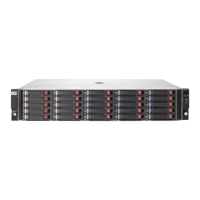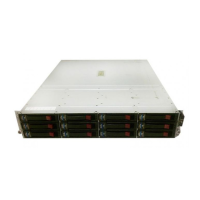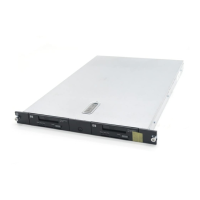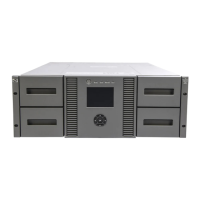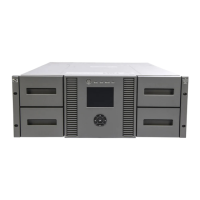Topology data access
To choose a SAN fabric topology, you must determine which data access type is appropriate for your
environment. The data access types are as follows:
• Local (one-to-one)—Data access between a local server and a storage system connected to the
same switch
• Centralized (many-to-one)—Data access between multiple, dispersed servers and one centrally
located storage system
• Distributed (many-to-many)—Data access between multiple, dispersed servers and storage systems
Table 3 lists the data access performance ratings for each SAN fabric topology.
Table 3 Data access performance by SAN fabric topology
Data access performance
SAN topology DistributedCentralizedLocal
HighestHighestHighestSingle-switch fabric
Not recommendedNot recommendedHighestCascaded fabric
HighMediumMediumMeshed fabric
Not recommendedMediumHighestRing fabric
HighHighMedium
Core-edge fabric
(15:1, 7:1)
HighestHighestHigh
Core-edge fabric
(3:1, 1:1)
Topology maximums
Table 5, Table 6, and Table 7 describe the maximum number of supported switches and ports for
specific fabric topologies. In some cases, the number may be less than the maximums specified in the
switch and fabric rules chapters. These differences relate to the number of hops in the fabric topology,
as well as the number of ISLs, which affects the number of available user ports.
Consider the following:
• User ports are for server and storage connections.
• It is assumed that you have the minimum number of ISLs. If you require more ISLs, this reduces the
number of user ports available for server and storage connections. See the following chapters for
configuration limits:
• “H-series switches and fabric rules” on page 83
• “B-series switches and fabric rules” on page 93
• “C-series Fibre Channel and FCoE switches and fabric rules” on page 135
• “M-series switches and fabric rules” on page 157
• If you connect a Storage Management Appliance to the fabric, this further reduces the number of
ports available for server and storage connections.
SAN fabric topologies46

